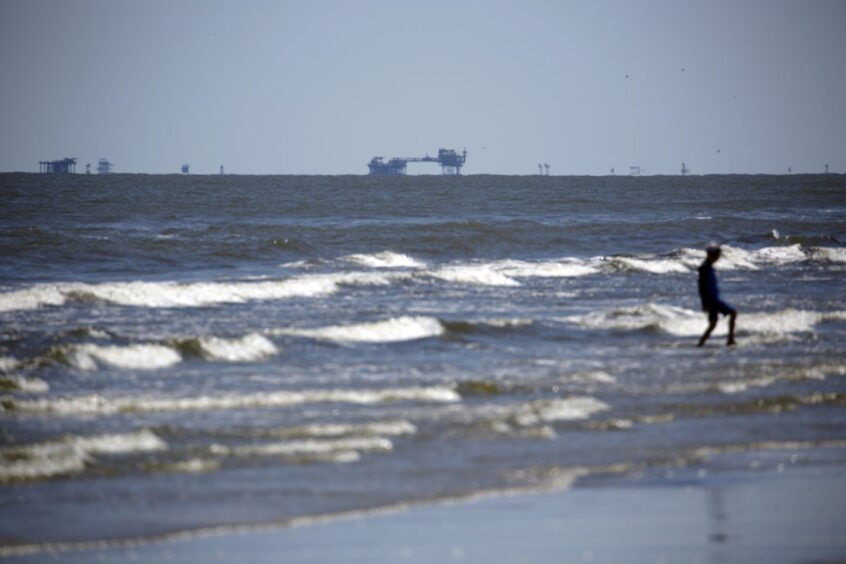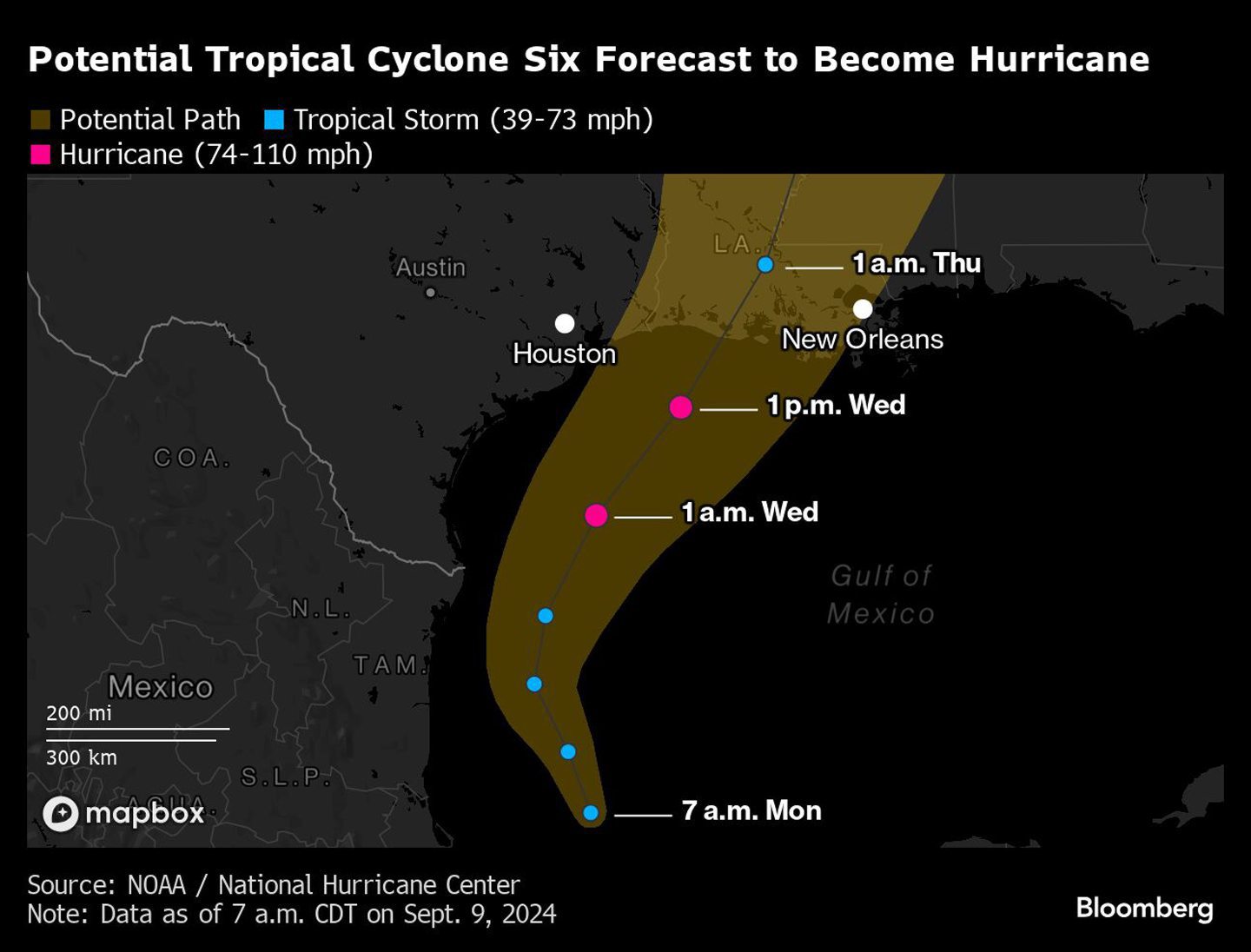
ropical Storm Francine forced some oil drillers to halt production and evacuate crews as it barreled through the Gulf of Mexico, and was expected to strengthen to a Category 2 hurricane as it heads toward the coast of Louisiana.
Strong winds and a dangerous storm surge are expected along the state’s shoreline, the National Hurricane Center said in an advisory issued at 1 a.m. in Houston on Tuesday. Francine is “anticipated to be just offshore of the coasts of northern Mexico and southern Texas through Tuesday, and make landfall in Louisiana on Wednesday,” the center said.
The system, located 425 miles (690 kilometers) south-southwest of Cameron, Louisiana, saw winds accelerate to 65 miles per hour from 50 mph on Monday. A hurricane watch is in effect for communities along part of the Louisiana coast.
Chevron Corp., Exxon Mobil Corp. and Shell Plc are among the companies taking measures like evacuating workers from vulnerable installations, suspending drilling activities, and shutting in some wells. The storm’s forecast path intersects with fields that account for roughly 125,000 barrels of crude and 300 million cubic feet of natural gas on a daily basis, according to Bloomberg calculations using government data.
Gas supply to Cameron LNG also fell about 41% from the previous day, according to data compiled by BloombergNEF.
On its expected track, Francine may rake nine major platforms, including Enchilada, Cerveza, Perdido and Hoover. That said, the storm probably won’t have a large impact on overall energy production, Chuck Watson, a disaster modeler with Enki Research, said in a social media post.
Meanwhile, the US Coast Guard declared Port Condition X-Ray at Houston, Galveston and other key Texas harbors, a warning that rough weather is expected within 48 hours. One upside to Francine as it moves ashore is that it will bring much needed water to the parched Mississippi River, temporarily raising the fortune of shippers before dry conditions set in again.
This will be the third storm to hit the US mainland this year. As Francine nears the coastline, it could encounter cross winds, or wind shear, that would threaten to weaken it. Still, the storm is currently forecast to make landfall with 100mph winds, which would make it a Category 2 storm on the five-step Saffir-Simpson scale.
The hurricane center is tracking two other disturbances in the central Atlantic Ocean with the potential to become tropical storms. Both are hundreds of miles or more from populated areas.
 © Image: Bloomberg
© Image: Bloomberg